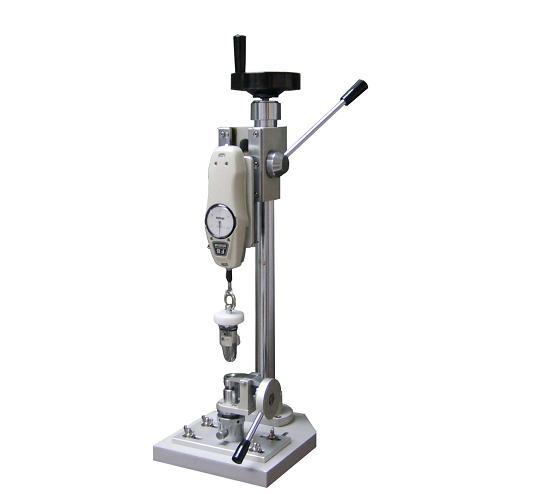
NewsInformation Center
ENS-500 500n push pull tester button tester
2023/08/30
The ENS-500 500N Push-Pull Tester is a specific type of button tester commonly used to measure the push and pull forces required to engage or disengage buttons. This instrument is designed to assess the functionality, durability, and performance of buttons in various industries such as textile, fashion, automotive, and electronics. The following is an in-depth explanation of the ENS-500 500N Push-Pull Tester and its features:
1. Principle of Operation:
The ENS-500 Push-Pull Tester utilizes a motorized system to apply forces on the buttons in both push and pull directions. The test is conducted by attaching the button to the tester and applying an appropriate force to measure the engagement and disengagement forces.
2. Force Measurement Range:
The ENS-500 Push-Pull Tester has a force measurement range of up to 500N (Newton), which allows it to accurately measure the forces required to actuate buttons of different sizes and strength requirements.
3. User-Friendly Interface:
The tester is equipped with a user-friendly interface that enables easy operation and control of the testing process. It typically features a digital display that shows the applied force, real-time peak force, and other relevant test parameters.
4. Adjustable Speed and Stroke Length:
The ENS-500 Push-Pull Tester offers adjustable speed and stroke length settings, allowing users to simulate various operating conditions and evaluate the button's performance under different force scenarios.
5. Statistical Analysis:
In addition to real-time force display, some models of the ENS-500 tester provide statistical analysis features. These features allow users to analyze the test results, calculate average forces, standard deviations, and generate force-displacement curves to assess the consistency and reliability of the buttons.
6. Data Logging and Reporting:
Most ENS-500 Push-Pull Testers are equipped with data logging capabilities, enabling the storage of test results for future reference or analysis. Some models also offer the ability to generate detailed test reports, including force curves, test parameters, and statistical analysis, which can be valuable for quality control and documentation purposes.
7. Interchangeable Grips and Fixtures:
To accommodate different button types and sizes, the ENS-500 tester often comes with a range of interchangeable grips and fixtures. These fixtures securely hold the buttons during testing, preventing slippage or misalignment.
8. Safety Features:
Safety is a crucial consideration in button testing. The ENS-500 Push-Pull Tester generally incorporates safety features such as overload protection, emergency stop buttons, and protective shields to ensure operator and equipment safety during the testing process.
9. Compliance with Testing Standards:
The ENS-500 Push-Pull Tester is designed to meet various international standards and testing methods related to button testing, such as ISO, ASTM, and GB/T. Compliance with these standards ensures that the testing process is accurate, consistent, and reliable.
10. Applications:
The ENS-500 Push-Pull Tester finds application in a wide range of industries, including textile and garment manufacturing, automotive, electronics, aerospace, and consumer goods. It is used to assess the functional performance and durability of buttons on clothing, upholstery, instrument panels, electronic devices, and more.
In conclusion, the ENS-500 500N Push-Pull Tester is a versatile and reliable instrument for evaluating the push and pull forces required to activate buttons. It offers a range of features, including force measurement, adjustable speed and stroke length, statistical analysis, data logging, and complies with international testing standards. By utilizing the ENS-500 tester, manufacturers can ensure the quality, reliability, and functionality of buttons used in various applications.
Previous: What is the standard for the button pull test?
N e x t : What are the Medical Face Mask breathability test standards?




